In most countries, legislation states that most packaged food must be labeled with “best-before” dates. These dates, as a rule, are estimates of what the worst case temperature scenario will be for the product. However, most of us store food in much better conditions, which leads to over 60 per cent of food waste being wasted in households because of this misinterpretation. Designers featured in this post offer ingenuous alternatives to the standardised expiry date, in a bid ton reduce food waste and save your money.


Smarterware by Ovie
Chicago-based tech startup Ovie has developed Smarterware, a line of gadgets that alert users when the contents of their fridge are about to spoil. According to Ovie CEO and co-founder Ty Thompson, the product has been developed to encourage a more mindful food storage, in order to reduce the amount of food leftovers being thrown away just because you forget about it.
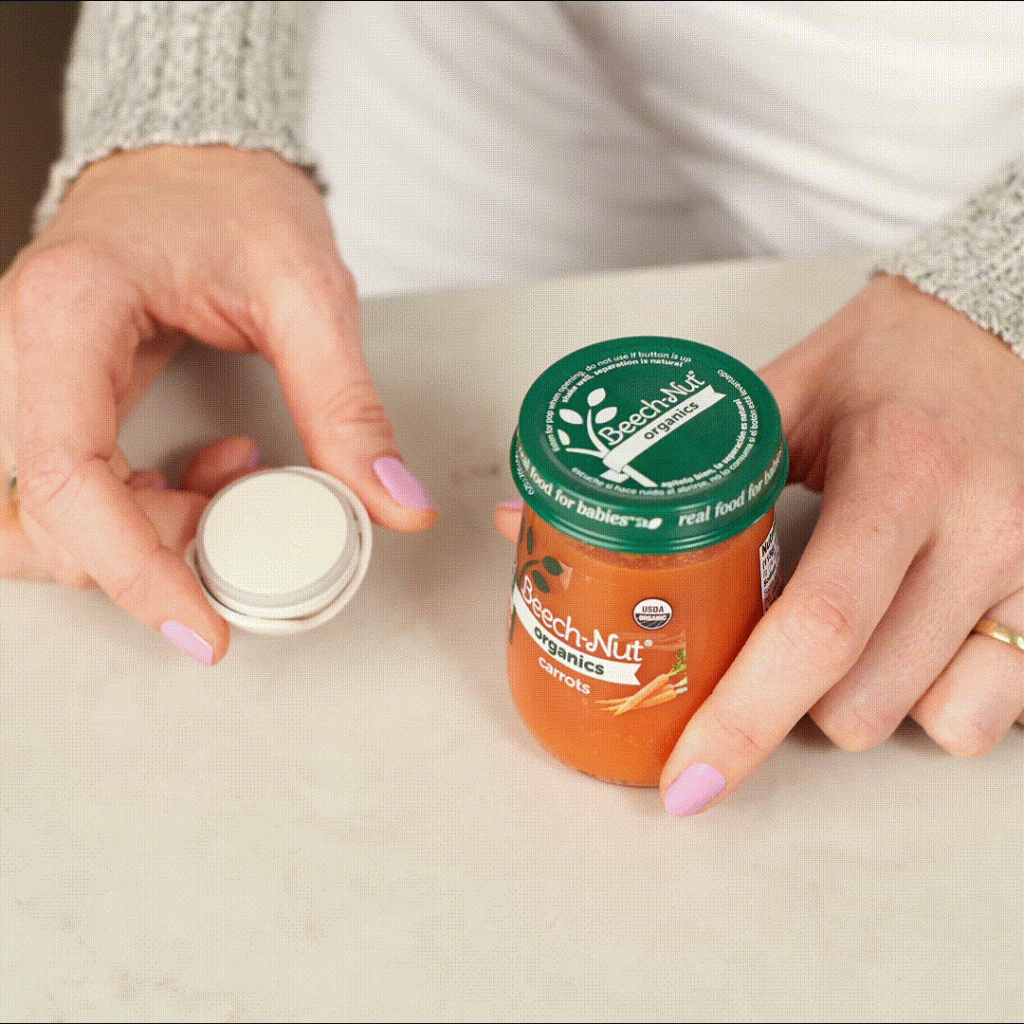
Smarterware by Ovie
The key item of the range is the so-called LightTags, glowing light rings that signal if an expiry date is approaching through recognisable colour coding, which are easy to read once you open the fridge. Green indicates a recently tagged food, yellow a food that should be eaten as a priority, and red a food that is likely no longer safe to eat.
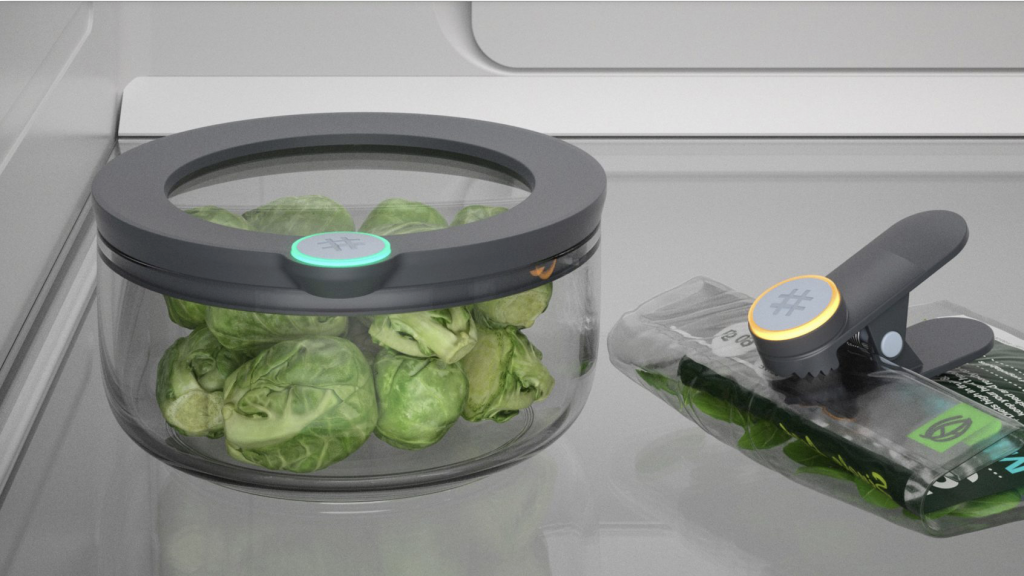
Smarterware by Ovie
The LighTags can be used literally on any type of product using a universal connector. that can stick to any existing packaging. The piece can be easily removed, reset and re-stuck to another food container to track food again. The tiny device comes with a coin cell battery. The LightTag tracks days using internal sensors and timers. In order to set the timer, you need to set the number of days that you want to track food by simply pushing the Ovie button once for every day you’d like to track.
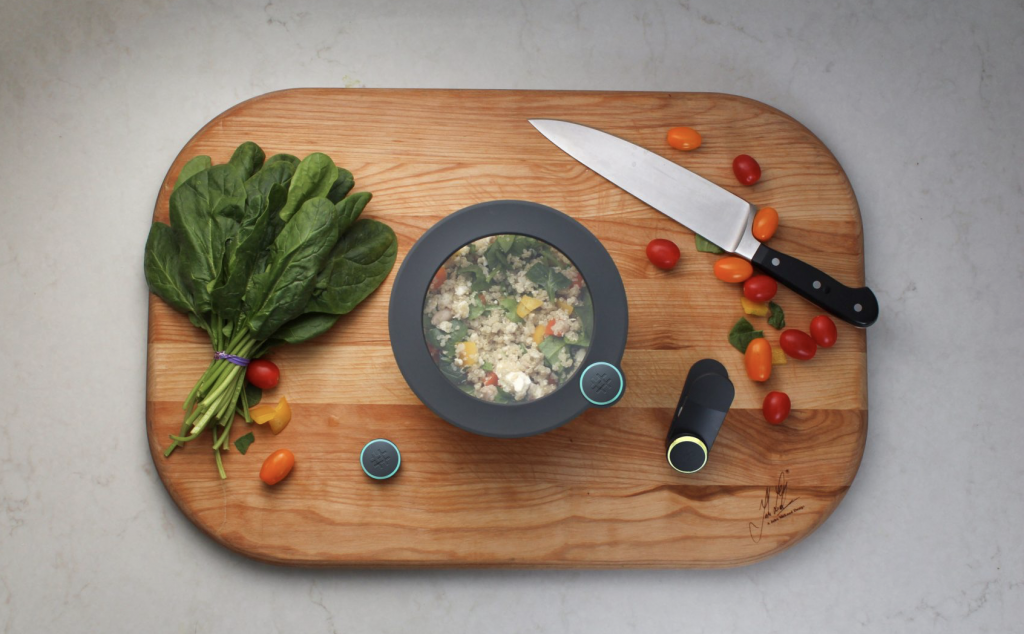
Smarterware by Ovie
The team has also prototyped Smarterware that works with Amazon Alexa’s voice recognition enabling the user to simply speak the name of the food for the system to match it with relevant expiry information in its database.
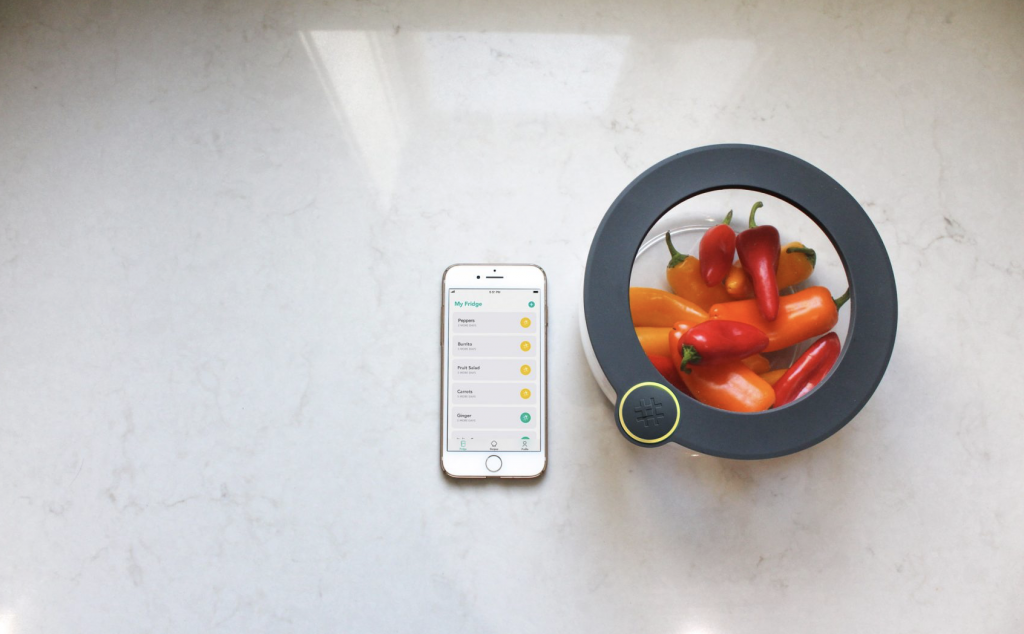
Smarterware by Ovie
To further develop the concept, the startup also works at additional features, such as a companion app, which sends notifications to a user’s phone when food is near spoiling, provides an overview of tagged items in their fridge and includes a recipe search with results filtered based on the ingredients they already have. This makes Smarterware functionality similar to that of smart fridges, but with a more accessible price point.

Vorkoster smart lid by Kimia Amir-Moazami
Berlin-based designer Kimia Amir-Moazami has another solution to reveal if your food is safe to eat or not. She has teamed up with Sany Chea, a chemistry scientist she met during a residency at the Fraunhofer Institute for Applied Polymer Research, to develop Vorkoster, a smart lid that makes the expiry of food visible using a pH-sensitive foil that reacts to the spoilage of protein-containing foods by changing colour.

Vorkoster smart lid by Kimia Amir-Moazami
The lid was designed for use with any protein-based food, such as meat or fish, for as these items expire, they release ammonia gas. The film, which is made from algae coated in a specially developed indicator dye, reacts to this gas by gradually changing colour from pale green to bright purple. as the food product begins to spoil.

Vorkoster smart lid by Kimia Amir-Moazami
Designed to fit over any type of tub or bowl, the lid aims to remind the user in an unobtrusive and analogue way to consume food before it is too late without relying on generic expiry dates, which can lead to food being thrown out unnecessarily.
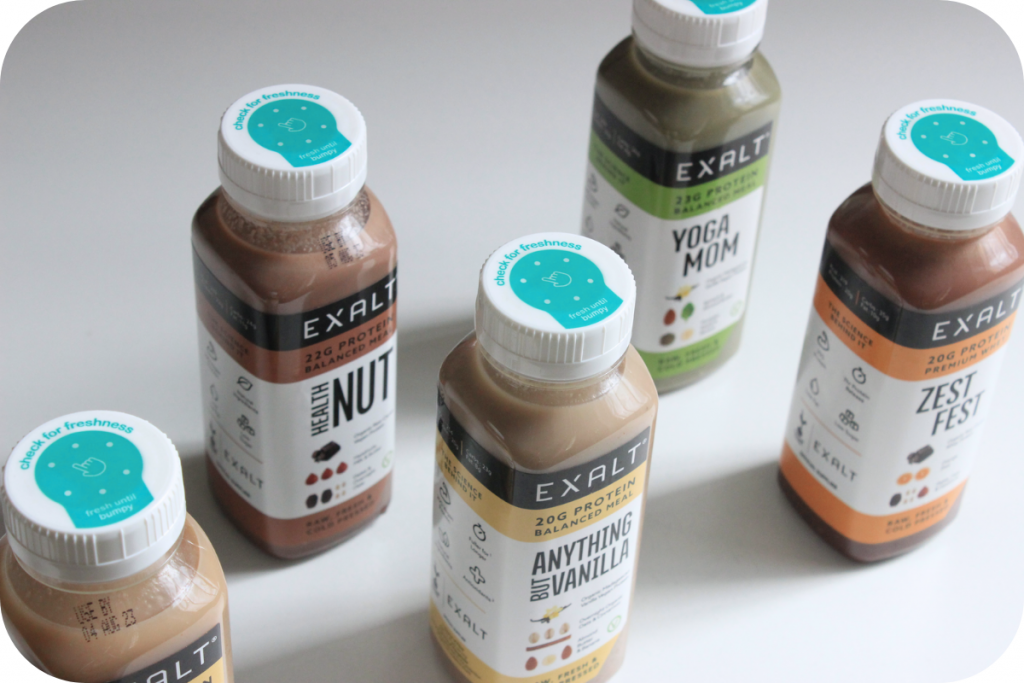
Bump by Mimica Lab (also header image)
Headed by London-based industrial designer Solveiga Pakštait, the Mimica project has developed Bump, a temperature-sensitive indicator for freshness. Adhered to a cap or a label, it encourages you to store your food and drink at the right temperature, reducing food waste by changing its texture when your food actually spoils, rather than relying on the expiry date.
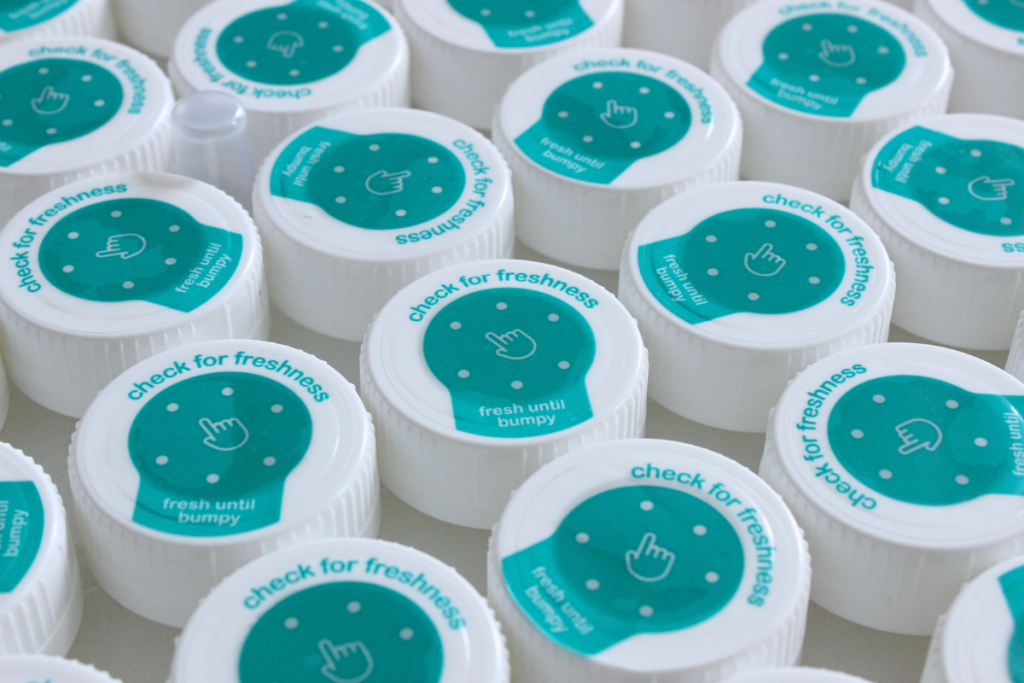
Bump by Mimica Lab
The patented gel technology responds to temperature changes thanks to a gel filling that goes from smooth to bumpy at the same pace as the contents spoils. When the label feels smooth, the food is still fresh and safe for consumption, while as soon as the label feels bumpy, the food is spoiled. This tactile indication of freshness makes it accessible to a wide range of consumers, regardless of their visual or olfactory abilities.

Bump by Mimica Lab
Aiming to become the globally recognised mark of freshness, Mimica is currently working on three projects introducing and deploying Bump technology to consumer products to reduce unnecessary waste of juice, meat, and seafood (such as salmon, prawns and cod). Besides, the team conducted some research on a new Bump indicator to help the monitoring and storing COVID-19 vaccines in order to keep these doses effective and safe in developing countries prone to power outages.